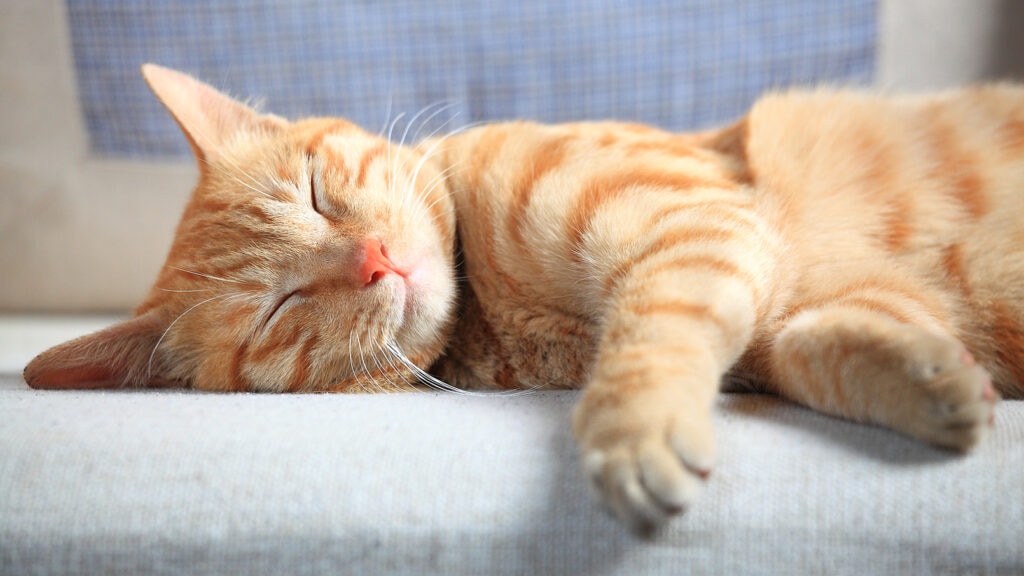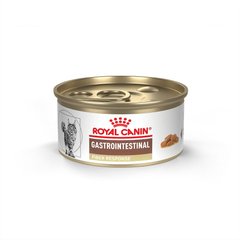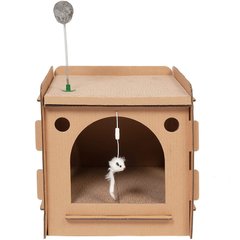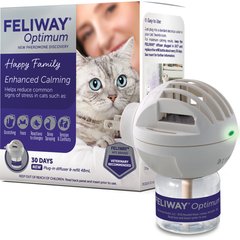What Is Pancreatitis in Cats? What Are the Signs?

Photo by fatesun/iStock/Getty Images Plus
Pancreatitis in cats is a serious condition that occurs when the pancreas becomes inflamed. Although this condition is treatable, it can be tricky to diagnose, as the symptoms are often inconsistent and overlap with other conditions.
To help you better understand this condition, we spoke with two veterinarians about what causes pancreatitis in cats, the signs to look for, and how to help your feline friend start feeling better.
What Is Pancreatitis in Cats?
The pancreas is a small but essential organ located in a cat’s abdomen between the right kidney and the intestinal tract.
It has two major jobs:
- Producing digestive enzymes that help your cat digest food
- Releasing hormones such as insulin that regulate blood sugar
In pancreatitis, these digestive enzymes become overactive and irritate the pancreas, causing inflammation. This inflammation can disrupt digestion and blood sugar regulation, and in severe cases may also affect other organs, such as the liver or intestines.
There are two main types of feline pancreatitis, both of which require veterinary care, says Amanda Stevens, DVM, CPEV, medical director at VEG ER for Pets in Alpharetta, Georgia:
- Acute: “Acute pancreatitis is sudden, severe, and temporary,” Dr. Stevens says. It can lead to systemic inflammation, shock, and death, and it needs to be promptly treated.
- Chronic: “Chronic pancreatitis is gradual, persistent, and progressive,” Dr. Stevens explains. It’s typically less dangerous than acute pancreatitis and causes recurrent inflammation of the pancreatic tissue.
What Are the Symptoms of Pancreatitis in Cats?
When pancreatitis develops suddenly (acute cases), the symptoms are usually more noticeable to pet parents. These may include:
- Lethargy
- Loss of appetite
- Vomiting
- Diarrhea or soft stool
- Weight loss
- Abdominal pain (may appear as reluctance to be touched or a hunched posture)
- Signs of dehydration (dry gums, reduced urine output, etc.)
In cases of chronic pancreatitis, the signs can be subtle and come and go, making them harder for pet parents to notice. Some days, your cat might act totally fine, and other days, they might skip a meal or throw up.
Pancreatitis can become an emergency when a cat shows signs of pain, lethargy, or dehydration, says Dr. Stevens.
“Severe dehydration can lead to dangerous electrolyte derangements and even death,” she explains.
What Causes Pancreatitis in Cats?
Pancreatitis occurs when digestive enzymes irritate the pancreas’ tissue, causing inflammation. But what causes this to occur is unclear.
“In cats, over 95% of pancreatitis cases do not have an obvious underlying cause,” Dr. Stevens says.
However, certain conditions and risk factors have been linked to pancreatitis, including:
- Underlying health conditions, including inflammatory bowel disease, liver disease, gallbladder disease, or diabetes mellitus
- Infections
- Certain medications
- Obesity
Middle-aged to older cats appear to be at higher risk; however, any cat can develop pancreatitis.
How Do Vets Treat Pancreatitis in Cats?
Pancreatitis can be difficult to diagnose in cats, as there’s no single test that confirms it and the symptoms often overlap with other conditions.
“It’s important to rule out other disease processes that can cause similar clinical signs, such as a GI foreign body, gastroenteritis, or inflammatory bowel disease,” Dr. Stevens stresses.
Veterinarians rely on several exams and tests to make an accurate diagnosis. According to Dr. Stevens, these may include:
- Physical exam: To check for signs such as abdominal pain and dehydration
- Blood tests: To see values for baseline blood work and a blood test called pancreatic-specific lipase
- Ultrasound: To look for changes or swelling in the pancreas
- X-rays: To rule out other causes of vomiting or abdominal discomfort
So, how do you treat pancreatitis in cats? “Vets treat pancreatitis with supportive care to decrease nausea, correct dehydration, treat pain, and provide nutrition,” says Ray Spragley, DVM, founder of Zen Dog Veterinary Care in Tuckahoe, New York.
In most cases, treatment can be managed on an outpatient basis, with medications administered at the clinic and continued at home, Dr. Spragley says. However, he notes that more serious or acute cases may require hospitalization for more intensive support.
Treatment for pancreatitis in cats may include:
- Pain management: Medications like buprenorphine may be used to reduce pain and stress.
- Anti-nausea medication: To control vomiting and help get your cat eating again, your vet may prescribe a medication like Cerenia.
- Appetite stimulants: If your cat isn’t eating on their own, medications like mirtazapine can help boost their appetite.
- Nutritional support: A bland, easily digestible diet, such as a prescription gastrointestinal food, may be recommended to reduce strain on the pancreas.
- Antibiotics: While not always necessary, antibiotics may be prescribed if your vet suspects an underlying bacterial infection.
- IV fluids: For cats who are dehydrated or severely ill, intravenous fluids can help maintain hydration and support organ function.
If treated, most cats with acute pancreatitis will recover well within days, Dr. Spragley says. “The prognosis is worse if they’re diagnosed with pancreatitis that is secondary to another issue.”
How Can I Help Manage My Cat’s Pancreatitis at Home?
If your cat has been diagnosed with pancreatitis, your vet will guide the initial treatment plan. However, ongoing care at home plays a significant role in their healing process.
If you’re wondering how to treat pancreatitis in cats at home, here are some ways to support your cat’s recovery (alongside your vet’s advice):
Encourage Hydration
Cats with pancreatitis are prone to dehydration, which can worsen their symptoms.
Encourage water intake with a cat water fountain, like the PetNF Transparent Fountain. Cats are instinctively drawn to running water, making fountains more enticing than stagnant water bowls.
You can also mix a little water or low-sodium broth, like Made by Nacho Chicken Bone Broth, into their food to increase hydration.
Recommended Products
Make Sure Your Cat Is Eating
Cats with pancreatitis often have a reduced appetite, putting them at increased risk for hepatic lipidosis (fatty liver disease)—a serious condition in which the liver begins to function abnormally. It can develop after just a day or two without food and may become life-threatening. That’s why ensuring your cat continues to eat is absolutely essential.
Cats recovering from pancreatitis often do better on a gentle, high-quality diet. Ask your vet about a prescription gastrointestinal formula, such as Royal Canin Veterinary Diet Gastrointestinal Fiber Response or Hill’s Prescription Diet i/d Digestive Care Chicken & Vegetable Stew. Wet food is often preferred for its higher moisture content and easier digestibility.
Learn the best way to switch your cat’s food.
Recommended Products
Administer Medications as Prescribed
Follow your vet’s instructions carefully when it comes to pain medication, anti-nausea meds, appetite medication, and subcutaneous fluids.
Provide Comfortable Resting Spots
Cats with pancreatitis might feel unwell and need extra rest while recovering.
To keep them comfortable, set up a cozy cat bed, like Best Friends by Sheri Original Calming Shag Fur Donut Cuddler, in a quiet, easily accessible spot where they can relax without being disturbed.
Recommended Product
Minimize Stress at Home
Stress can make pancreatitis symptoms worse, so creating a calm, low-stress environment is important. Try:
- Setting up a hideaway, like the Tiger Tough Condo Hideaway
- Using a pheromone diffuser, such as the Feliway Optimum Diffuser
- Keeping noise to a minimum
- Sticking to a consistent daily routine
Recommended Products
Monitor Their Condition Closely
Track your cat’s eating, drinking, litter box habits, and behavior. If symptoms worsen, contact your vet. Even subtle changes could indicate a need to adjust treatment.
How Can I Prevent Pancreatitis in My Cat?
“There is no specific way to reduce the risk of pancreatitis in cats,” Dr. Spragley explains.
That said, keeping your cat generally healthy through regular vet checkups, a balanced diet, proper hydration, and a low-stress home environment might help reduce complications if pancreatitis occurs.
FAQs About Cat Pancreatitis
Q: How long can a cat live with pancreatitis?
A: Cats with mild to moderate pancreatitis can often live normal, healthy lives, though repeated episodes are possible. However, in cases of severe acute pancreatitis, the condition can be life-threatening.
Q: Can a cat recover from pancreatitis?
A: Yes, many cats recover fully from acute pancreatitis with timely treatment and supportive care. Chronic pancreatitis can’t be “cured,” but it can often be managed successfully through diet, medications, and lifestyle adjustments.
Q: What foods cause pancreatitis in cats?
A: While high-fat foods are a known trigger for pancreatitis in dogs, the same link hasn’t been proven in cats. Still, for your cat’s overall health, it’s best to stick to a high-quality, nutritionally balanced diet and avoid feeding them table scraps or anything outside their regular food.
Q: What is the red flag for pancreatitis in cats?
A: One of the biggest red flags is a sudden loss of appetite, especially when paired with vomiting, diarrhea or soft stools, lethargy, or abdominal discomfort. If you notice these signs, contact your vet right away.
Attributions
This content was medically reviewed by Hannah Hart, DVM, Chewy veterinarian.










